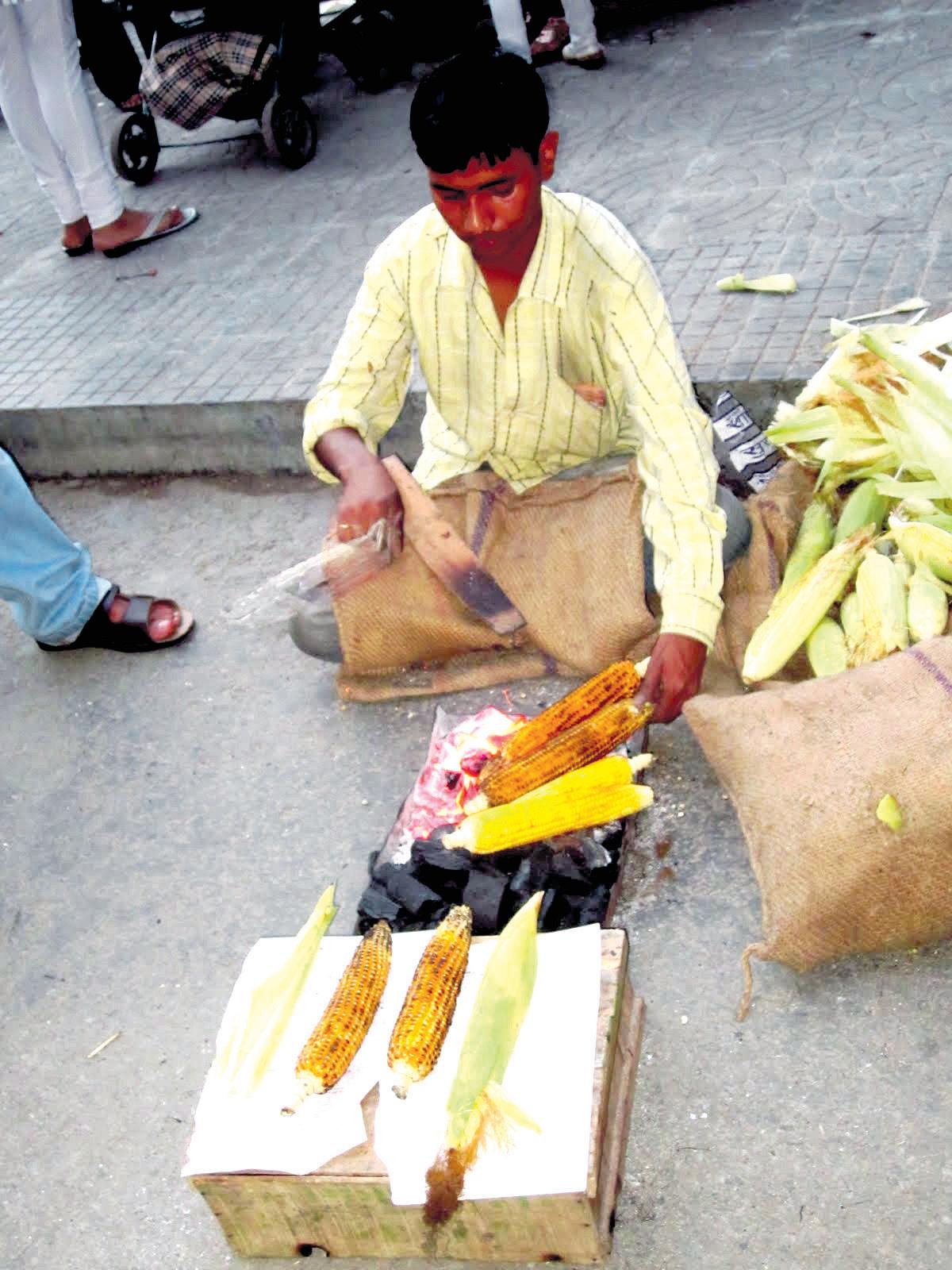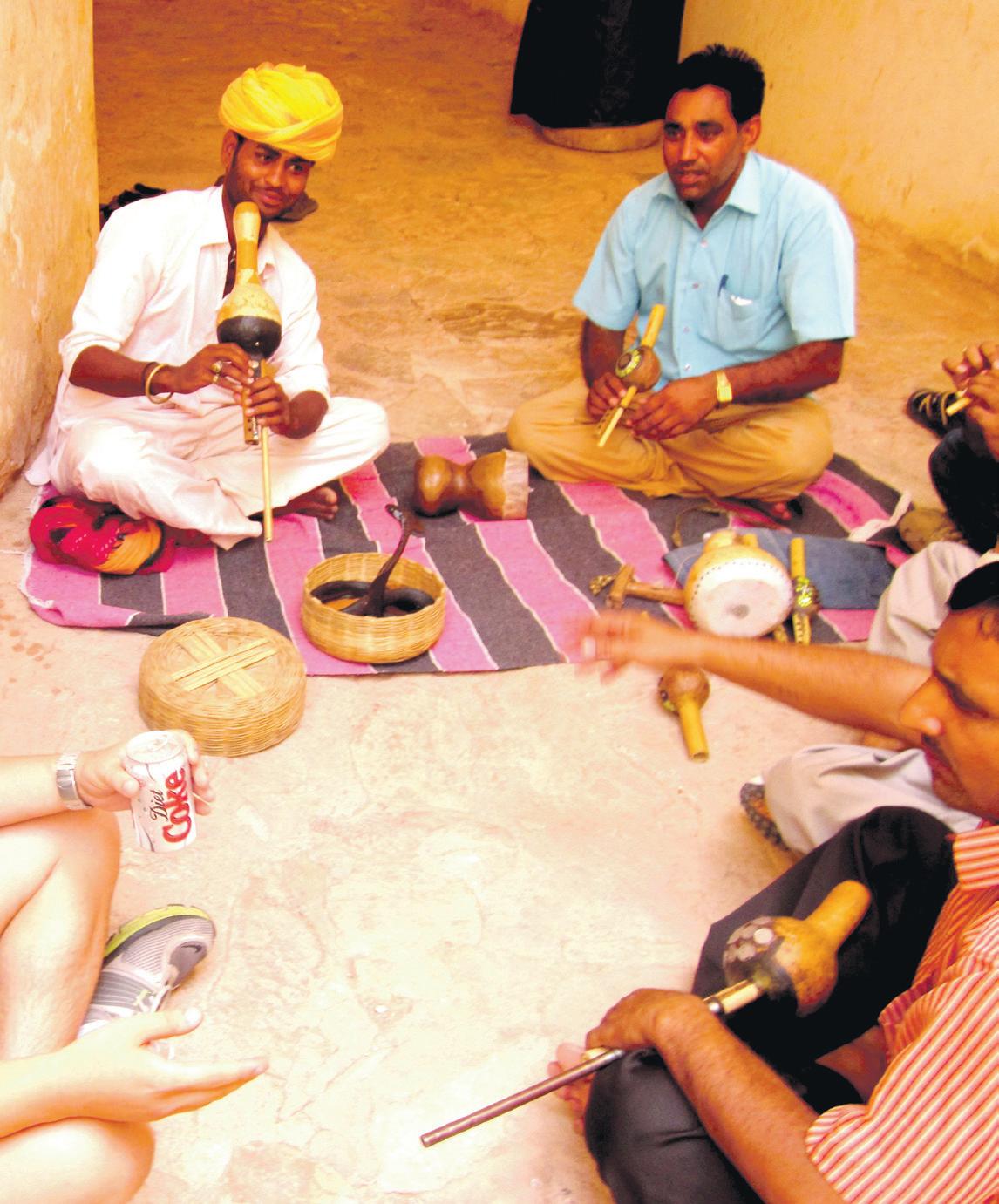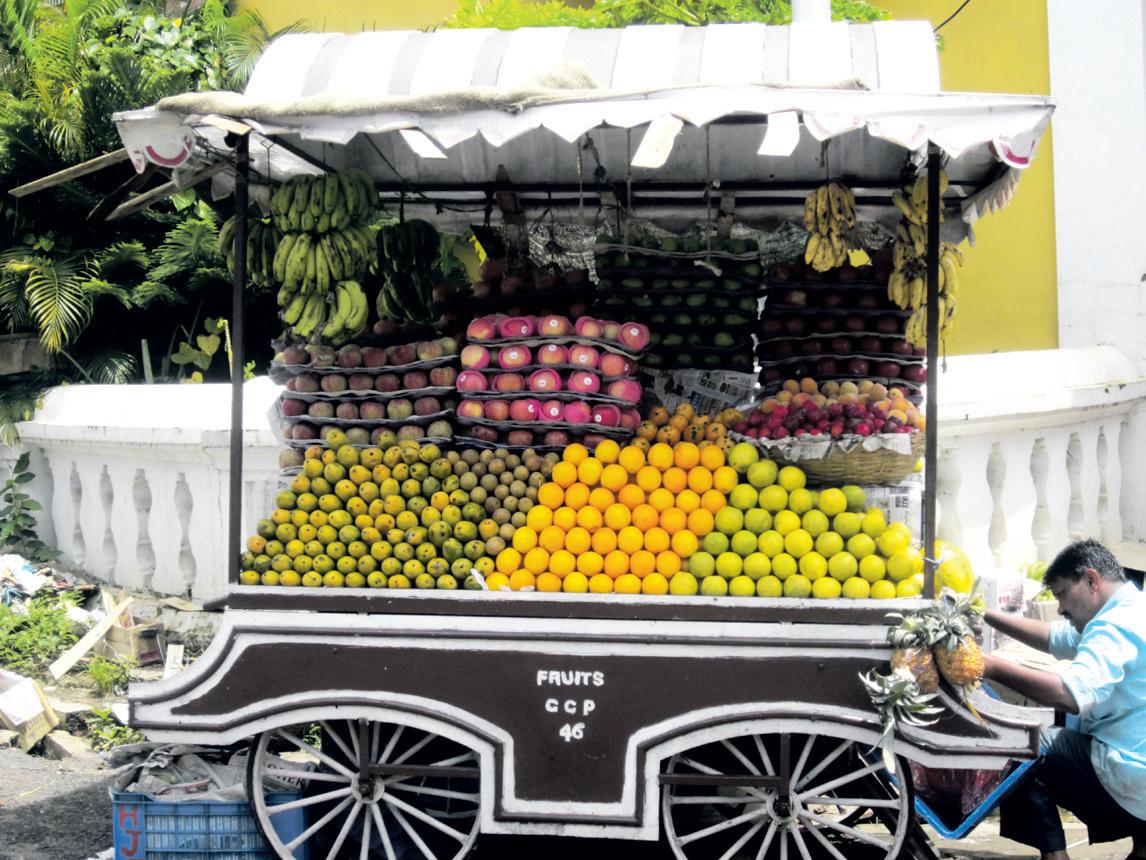
4 minute read
A struggling species
from 2012-03 Sydney (2)
by Indian Link
BY MAllI IYER
life spills out on the pavements in most Indian cities where trading is brisk and there is no dearth of walk-in customers for paav-bhaji, vada paav, pani puri and chaat pakodi, deep fried fish or mutton cutlets with chutney, hot steaming idlis with sambar, chana bhatura, roasted corn on the cob, ganna (sugarcane) juice or coconut water, followed by a Banarasi or Calcutta paan from the nearby paan/beedi shop. Most baby boomers grew up with a lingering taste of street food and would occasionally give their lessons in hygiene a toss to savour their favourite snack. Millions of non-resident Indians visiting India have low immunity to food sold in handcarts or roadside snacks, but would happily risk a Delhi belly rather than miss out on these street delicacies. More recently, some of these roadside traders have taken to using disposable gloves and plastic plates and cutlery in an attempt to shed their unhygienic image, but in the foreseeable future there won’t be health/food/hygiene inspectors breathing down their necks. Of course, you can see the odd bribeable policeman throwing his weight around, and happily gobbling down free food offered to him after collecting his hafta from the stall owners. And Indian chai stalls vending bhajiyas and samosas are now internationally known.
Street vending has evolved over centuries, but reliable statistics indicate their numbers in excess of 10 million today. Over 85 % of these are in the 16-35 age group; most have landed in cities in search of employment. Their contribution to the economy goes unrecognised, as also the support role they provide to small manufacturers and thousands of home-based artisans and craftsmen via merchandising and distribution. They add colour and character to the community and are definitely a draw card for the tourism industry. The multiplier effect on employment potential and their net worth to the Gross Domestic Product (GDP) of India will surely run into billions, although governments at all levels don’t give them their ‘squatters rights’.
Women traders and vendors formulate a significant percentage of these numbers.
Street vendors are much maligned as they have no rights, they are treated as a nuisance by municipal authorities, and with contempt by the police, while being used by political parties. They are victimised and marginalized, despite rendering such valuable services. In the last decade, some organisations, local governments and courts have lent them support, resulting in the creation of a “National Association of Street Vendors in India –NASVI”. A street food festival organised in Delhi in November 2011 was hugely popular and elicited rave reviews in the news media. A National Policy on Urban Street Vendors was agreed by all the state governments in 2004, but implementation of their recommendations have largely remained on the back burner. Slowly but surely, a semblance of recognition is coming to our street vendors even as they are threatened with extinction.
Indian town planners and economists have scarcely realised their importance to consumers or recognised the need to create infrastructure for the street vending industry. Modern retailing trends through department stores, shopping malls, supermarket chains continue to mirror and ape the shape of things prevalent in the western world. They might end up creating soulless, sterile and unappealing environments in glass and concrete towers. None of them would be able to generate the vibrancy, history or colour that one gets in Crawford Market, Colaba Causeway and Chor Bazaar of Mumbai; Janpath, Jama Masjid or Chandni Chowk in Delhi; Moore Market, Marina Beach, T. Nagar or Pondy Bazaar of Chennai; and the back streets of Chowringhee or the Gariahat Market of Kolkata.

Visitors are struck by the variety in trash and treasure found in street markets. It is not uncommon to see silverware, antiques, wood carvings, oil paintings, exquisite batik prints, handmade curios and small items of furniture being traded. People welcome the camel-drawn cart vendors that hawk colourful hand woven bedspreads and sheets, providing gainful employment to village weavers. Self-employed artisans have now graduated to vending in the cities, although traditionally they were an integral part of the village economyoffering oil massage (champee), ear wax removals and cleaners, hair cuts/trims (the family nayee), shoe shine (boot polish), ironing clothes (istriwalla), razor/ knife sharpening with a grinder mounted on bicycle wheels, flower bouquets and garlands (gajrawallis), mochis who repair all types of leather goods, and last but not least, kabuliwallahs hawking dried fruit from Afghanistan. It is a marvel that their survival instincts enable these traders to carry on despite mounting inflation and costs of living in mega cities. In the longer term they are sure to vanish from our daily life. Milk vendors (doodhwallas) carrying huge urns on their bicycles are already an extinct species due to ‘operation milk flood’, delivering pasteurised milk from mechanised dairies to most city households. It would be a glaring omission not to mention the street entertainers like snake charmers and the madaaris (street magicians) with trained monkeys and street urchins who perform acrobatics. Balloon sellers tout a wide range of tricks and treats to school children. Indians have been believers in soothsaying and foretelling the future, with agents of the trade using Tarot cards or parrots and cows to offer predictions on street corners and community maidans Another artisan worth a mention is the ‘bioscopewallah’ who usually attracts children with hand-operated movies viewed through a peeping glass. Candy-floss and ice lollies are another hawking trade directed at school children with which most people are familiar.

Of course, haggling is a must at all these pavement shops. I am sure most of us are aware of hawking bartanwaalis (baandiwallis) exchanging stainless steel kitchen vessels for a bundle of old clothes. We have encountered the kabaariwallas who exchange your empty canisters, glass bottles, old newspapers and magazines for money. Even housewives beat down bhaajiwaalas and fruit vendors in their handcarts with their haggling skills.
With the advent of foam, latex and springs, mattresses have undergone a sea change, but one must not forget the old systems of rejuvenating cotton-stuffed beddings by village artisans who converted the flattened mattress into its original fluffy form using cotton separators of animal guts strung to an axe-like wooden structure. They are on their way out, and never to be seen again.
The global financial meltdown and current recession is estimated to cost 52 million jobs around the world. One hopes that our street vendors will spark a renaissance not just in India, but in the western world despite dark forebodings about their existence caused by modern technology.









